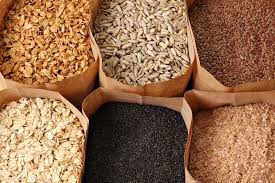Don’t Be Afraid of Fiber: The Benefits Of Fiber And How to Get More In Your Diet
Don’t Be Afraid of Fiber: The Benefits Of Fiber And How to Get More In Your Diet
What is Fiber?
Fiber is a nutrient found in a variety of foods and offers many benefits to all individuals in various ways. Having adequate fiber in your diet can promote regular bowel movements and prevent constipation, especially when paired with exercise, which also provide this benefit. It does so by providing bulk and absorbing water in the gut. Additionally, fiber might also help prevent and treat various diseases and conditions including cardiovascular diseases, colon cancer and diabetes. Additionally, having fiber in your meal can help you stay full longer and is therefore beneficial for those trying to lose or maintain a healthy weight.
Where Can I Find Fiber?
You can find fiber in a variety of foods in most food groups including fruits and vegetable, grains (whole grain breads and cereals), and meat and alternatives (nuts, seeds and legumes such as dried peas, beans, soy and lentils).
How Much Fiber Is Recommended Daily?
The adequate intake of fiber for males aged 18 to 50 years is 38 grams per day and for women of the same age is 25-26 grams per day, according to the Dietary Reference Intakes set out in Canada. (http://www.hc-sc.gc.ca/fn-an/nutrition/reference/table/ref_macronutr_tbl-eng.php)
How Can I Change My Diet to Get More Fiber?
- Add a fruit and/or vegetable to your daily routine (can be fresh or frozen)
- Choose whole wheat instead of white when selecting breads, pastas and rice.
- Compare food labels when selecting breads, crackers and cereals to select the option which contains more fiber per serving.
- Use dried peas, beans and lentils in dishes instead of meat once or twice a week. This can also reduce caloric intake and help with weight loss.
- Add a serving of nuts or seeds such as almonds as a snack.
For more information and tips on how to add fiber into your diet or if you have a general inquiry about how to adopt healthier eating patterns, Registered Dietitian Arin Taub at Form and Function Health and Wellness Clinic will be happy to help. Do not hesitate to book an appointment at your earliest convenience.
Eat well and stay active!
